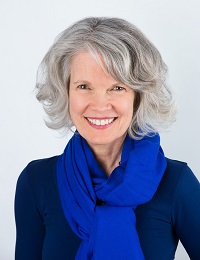Blog Posts | January 16, 2018
Share This
By Dr. Kathryn K. Matthew
IMLS Director
Having just completed the latest round of strategic planning at IMLS, I wanted to share some lessons-learned from this process.
It’s understandable to feel strategic planning may be irrelevant these days or simply a burdensome exercise. Developing a strategic plan in a quickly changing world is challenging, and the pace of change is ever accelerating. This acceleration has reached a point where a printed strategic plan seems almost quaint. Taking the time to think strategically while in the midst of the planning process makes us stretch, and needs to become more of a daily rather than a quarterly mindset.
More dynamic markets, unpredictable social changes, user-centered design, Big Data, and the ever-accelerating introduction of new technologies now demand more immediacy to strategic decision-making. Nonprofits and other social betterment-driven organizations are just shifting into this fast-lane life. Compounding this, philanthropy and government-sourced funding agencies, rather than bulwarks against shifting seas, are now also driven to accelerate the pace of change. It can be hard for me, for us, to keep up.
As we considered our path forward at IMLS, it became clear that we need to think strategically about how to develop a plan that would keep us focused in the years ahead. We cannot rely on a static plan to show the way forward. We need to change how often we think of strategy, not just change the strategy once and be done. The old phrase “becoming a learning organization” is part of this shift, except now we really mean learning on all levels. We’ll be committing to continually gathering and synthesizing information from all sources to course-correct, identify new options, trouble-shoot early, and pilot new opportunities.
We reviewed recent convening reports, applications, grantee products, and studies not only from IMLS but from other grantmaking organizations, SMEs, and policy researchers.. We considered what other technologies, lifelong learning approaches, community change dynamics, and socio-economic trends were happening within our sectors. We discussed what should be the role of IMLS in creating stability and adoption in some issue areas or catalyzing forward movement in newer areas.
It became clear that as we moved through the planning process, while some focal areas remain constant (such as lifelong learning and collections stewardship), other areas are evolving quickly (such as information access and community engagement). I stopped and marveled at the changing roles of museums and libraries within their communities. We discussed how this would require a blend of flexible, responsive, deliberate, and exploratory approaches from IMLS.
As a result, we view our new five-year plan as a framework containing a core set of values, overarching goals, and strategies to guide us in our work with museums, libraries, and their communities and partners. We anticipate examining this plan frequently and updating it as conditions change around us. We will refine the plan as we see the impact of our investments. We are committing to becoming a learning organization by establishing methods to assess our progress.
It’s now up to us, and you, to bring this vision and plan to life. You need to be a part of this, now more than ever. People give life to a plan-- not the other way around. Please join us on this journey to support the capacity of museums and libraries to positively transform their communities.

About the Author
Dr. Kathryn K. Matthew was confirmed by the Senate in September 2015 as the 5th director of the Institute of Museum and Library Services.
